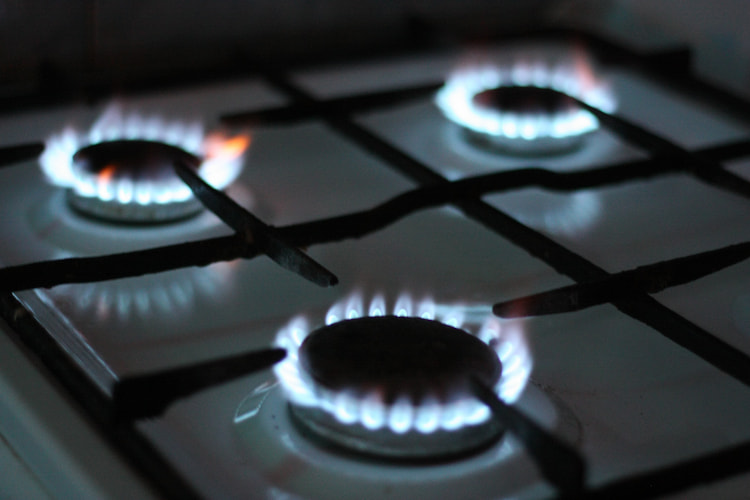
In our Ask a Scientist series, we ask our BCPP Science Team, Dr. Rainbow Rubin, PhD, MPH, and Pujeeta Chowdhary, MPH, your questions.
Wintertime is a wonderful time to learn about air pollution because we spend more time indoors, where the air is more polluted (yes, more) than it is outside.
It’s also important to learn about how our fuel sources impact air pollution both outdoors and in our homes.
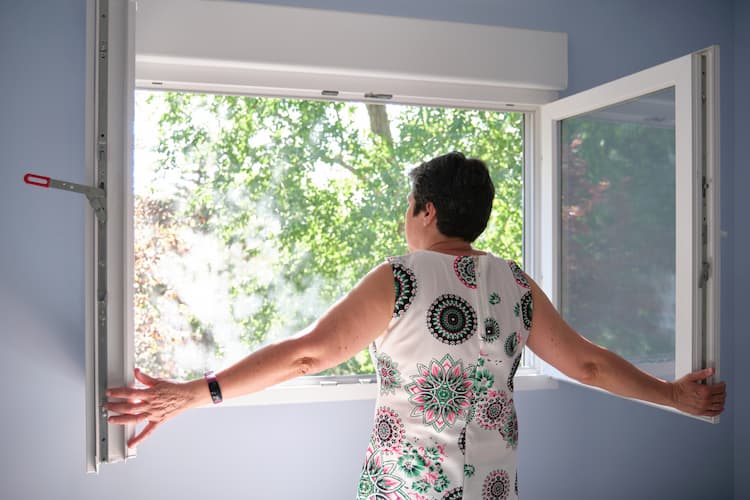
What is air pollution?
Outdoor air pollution
Outdoor air pollution contains a mixture of compounds, including Nitrogen Oxides (NOx), Carbon Oxides (COx), Sulfur Oxides (SOx), particulate matter (PM) smaller than 10 microns, and hazardous air pollutants such as benzene.(1)
Many air pollutants are mutagenic (cause mutations to our DNA) or carcinogenic (cause cancer).
Of particular concern are nitrogen oxides (NOx), which are associated with an increased risk of breast cancer, and benzene, which is a human carcinogen with strong evidence of genotoxicity and mammary tumor formation in animal models.(3,8,11)
Indoor air pollution
Our indoor air can contain the same chemicals as outdoor air pollution from the same cause—gas combustion. Just as when gas-powered cars burn gas outside, producing NOx and benzene, so too do gas stoves inside. Recent media attention covering gas stove pollution includes the New York Times article, “Gas Stoves are Tied to Health Concerns: Here’s How to Lower Your Risk.”
Media attention on gas stoves comes from a study that found gas stoves commonly release twelve hazardous air pollutants. Benzene alone was detected in 99% of samples, with average concentrations of 0.7−12 ppmv (parts per million by volume).(6) Benzene concentrations exceeding 0.94 ppbv (parts per billion by volume) can be comparable to environmental tobacco smoke.
You read that correctly, average benzene exposure from gas stoves was an order of magnitude greater than from secondhand smoke. In other words, average air samples from gas stoves contained as much or more benzene as from breathing in secondhand cigarette smoke. Even when stoves are turned off, researchers found that natural gas leakage from stoves and ovens can result in indoor benzene concentrations that exceed the California 8-h Reference Exposure Level (the 8-hour health safety limit).
Indoor stoves also present a source of indoor air pollution due to releasing combustion byproducts such as polycyclic aromatic hydrocarbons or PAHs. A study evaluating the relationship between air pollution from indoor stoves and fireplace use and breast cancer risk found a 42% elevated risk (11-84% range with 95% confidence) in homes where synthetic logs were burned but no elevated risk in homes burning wood alone.(7)
In response to recent studies showing unsafe levels of exposure, groups are reviewing current policies and passing new health protections such as new building requirements for electric-powered appliances instead of gas-powered appliances. In response, the gas industry is mounting a response to prevent these policies.
In the meantime, there are some simple steps we can follow to reduce the concentration of dangerous compounds like NOx, benzene, PAHs, and particulate matter in our homes.
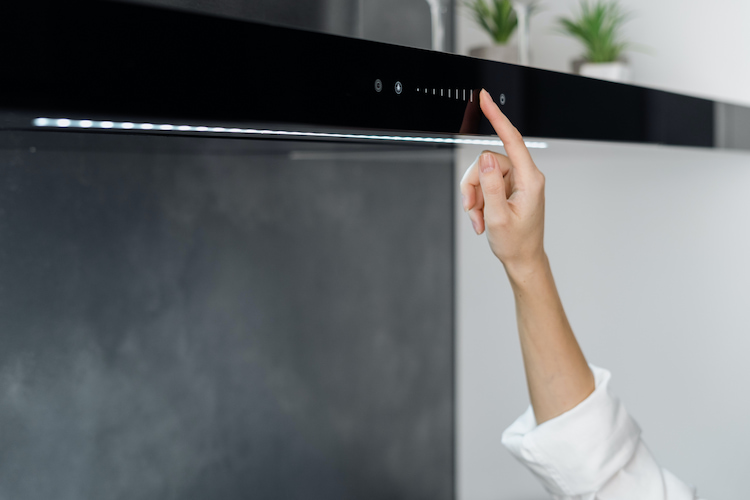
How to Reduce Home Indoor Air Pollution
- Open windows and doors for ventilation: Remember that outdoor air pollution is less polluted than indoor air pollution, so the easiest way to ventilate is to open windows.
- Ventilate by using the exhaust hood whenever your gas stove is on (and even when it’s not) to reduce your exposure to NOx and benzene.
- Reduce or eliminate the use of synthetic logs for indoor stoves/fireplaces to reduce your exposure to PAHs.
- Most of all, learn more about how our everyday actions impact the air around us through the AirNow and Spare the Air Program which alert residents when air quality is forecast to be unhealthy and share information on ways to reduce air pollution such as taking public transportation and limiting fireplace use.

Q&A
Q: How do you reduce air pollution from gas stoves?
A:
- Exhaust every time: Use the exhaust hood every time you use a gas stove- the exhaust should be used every time you turn on your gas stove to ensure that fumes are being removed from your breathing space.
- Ventilate your space: The simplest form of ventilation is to open a window or door to increase the flow of outdoor air inside. Remember, outdoor air is much less polluted than indoor air.
- Consider your fuel source: Conventional electric stoves are less expensive and safer for our air and health. If you are purchasing a new stove, consider an electric or induction stove. An induction stove can be costly but is 5-10% more energy efficient than conventional electric stoves and about three times more efficient than gas stoves.
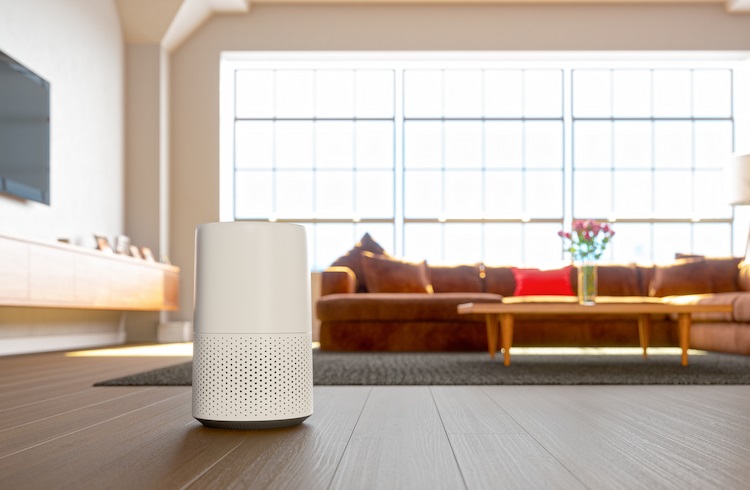
Q: How do you reduce air pollution from our everyday environment?
A: The best way to reduce exposure to air pollutants is to remove them from indoor environments. Particle air pollution can be removed using HEPA vacuum cleaners and air purifiers in your most trafficked rooms. Check here for EPA’s tips on buying an air purifier and here for how to build a DIY air filter. Dust with a damp cloth to remove surface dust without stirring up the chemicals that collect in dust, like toxic flame retardants from the furniture. Be sure to avoid aerosol cleaners. Here are tips for finding safer cleaning products. Vapors such as NOx and benzene from gas stoves need to be removed by exhaust fans or ventilation because they are not trapped by HEPA filters.
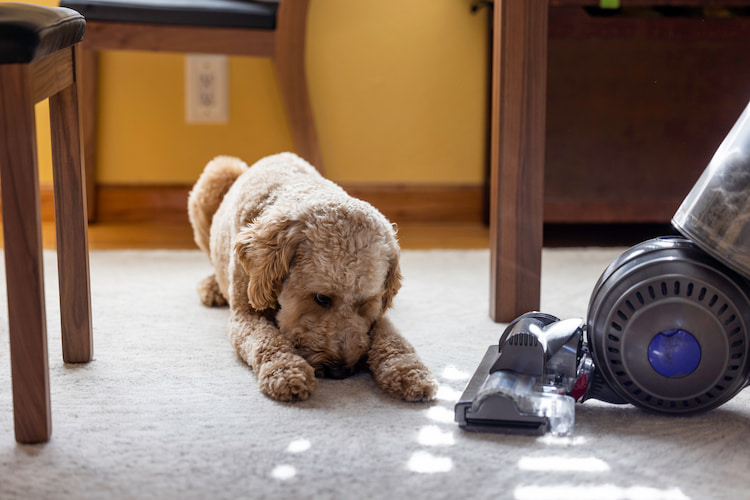
Q: Who is most likely to be exposed to air pollution?
A: People who live in high-density urban areas, around highway traffic, and in neighborhoods close to industrial manufacturing, processing, or waste facilities are more likely to be exposed to higher levels of air pollution. Ways to improve indoor air include 1. using electric (vs. gas) stoves, HEPA air filters, and vacuums; 2. choosing unscented personal and cleaning products; 3. avoiding aerosol cleaning products; and 4. limiting the use of gas ovens, stoves, fireplaces, candles and “air fresheners.”
Q: Who is most vulnerable to the health effects of air pollution?
A: Geographic, socioeconomic, and racial/ethnic factors are important predictors of risk, with indications that Black women and low-income populations living close to freeways may be more vulnerable. Depending on the pollutant being studied, premenopausal and postmenopausal women may both be vulnerable to the cancer-associated effects of exposure to air pollution.
Infants and small children are particularly vulnerable to the disease-causing effects of indoor pollutants because they play on floors, put their hands in their mouths, and have a greater sensitivity to many indoor pollutants. In utero and early exposure to air pollution close to freeways has been associated with developmental and learning disorders.

Photo of a Dracaena ‘Janet Craig’ plant
Q: Can indoor plants improve indoor air?
A: Yes, some do! In a study that measured the removal of benzene by plants, Dracaena ‘Janet Craig’ plant was the most effective.
Read More
Learn more science about breast health outcomes associated with air pollution.
Recommended Watching
Indoor Air Pollution: The Dirty Secret Lurking in Our Homes
Outdoor air: Something in the Air PBS Documentary
Air Pollution in LA: Right to Breathe
Key Terms
Genotoxic: A genotoxin is a chemical or agent that can cause DNA or chromosomal damage. Such damage in a germ cell has the potential to cause a heritable altered trait (germline mutation). DNA damage in a somatic cell may result in a somatic mutation, which may lead to malignant transformation (cancer).(5,10)
Carcinogenic: the EPA considers Class A carcinogens as pollutants with adequate human data indicating the chemical causes cancer in people. Class B1 carcinogens have some human data and sufficient animal data to indicate their potential to cause cancer. Class B2 carcinogens have limited to no human data, but sufficient animal data to indicate their potential to cause cancer.(12)
Mammary tumors: Tumors or neoplasms refer to an abnormal mass of tissue in the mammary gland that forms when cells grow and divide more than they should or do not die when they should. Neoplasms may be benign (not cancerous) or malignant (cancerous).
Hazardous air pollutants: Pollutants (i.e., benzene, lead, asbestos, vinyl chloride) that cause or may cause cancer or other serious health effects, such as reproductive effects or birth defects, or adverse environmental impacts. The Clean Air Act requires the EPA to regulate toxic air pollutants, also known as air toxics.(4)
Nitrogen oxides: A group of highly reactive gases that are abbreviated as NOx. One NOx implicated in breast cancer is NO2 (nitrogen dioxide) and is the main source of nitrate aerosols, which form an important fraction of PM2.5 and, in the presence of ultraviolet light, form ozone.(3)
Polycyclic aromatic hydrocarbons (PAHs): Polycyclic Aromatic Hydrocarbons are a class of chemicals that occur naturally in coal, crude oil, and gasoline. They result from burning coal, oil, gas, wood, garbage, and tobacco. PAHs can bind to or form small particles in the air and are carcinogenic.
Particulate Matter: Particles in the PM2.5 size range can travel deeply into the respiratory tract, reaching the lungs. Exposure to fine particles can cause short-term health effects such as eye, nose, throat, and lung irritation, coughing, sneezing, runny nose, and shortness of breath. Exposure to fine particles can also affect lung function and worsen medical conditions such as asthma and heart disease. Particulate matter has been associated with breast cancer risk with the smallest particles being the most dangerous. In one study, higher exposure to PM2.5 (particulate matter 2.5 microns) increased the risk of dying from breast cancer by 9% (95% confidence of 2-16%).(2)
HEPA air filters: High-efficiency particulate air filters can theoretically remove at least 99.97% of compounds as small as 0.3 microns (µm) such as dust, pollen, mold, bacteria, and airborne chemical particles such as phthalates, PFAS (per- and poly-fluoroalkyl substances), flame retardants (such as PBDEs)
Environmental Tobacco Smoke: Smoke that comes from the burning of a tobacco product and smoke that is exhaled by smokers. Inhaling environmental tobacco smoke is called involuntary or passive smoking. Also called ETS and secondhand smoke.
Support our health and science articles
Science is the cornerstone of everything we do at BCPP. We’re always looking to find new ways to provide you with health-protective info. That’s why we launched this new series! Please make a gift of prevention today so we can bring you more science insights.
Footnotes
[1] Fino, A. 2019. “Air Quality Legislation.” Encyclopedia of Environmental Health, 61–70. https://doi.org/10.1016/b978-0-12-409548-9.11045-0.
[2] Guo, Qing, Xi Wang, Yue Gao, Jun Zhou, Chenyin Huang, Zhengdong Zhang, and Haiyan Chu. 2020. “Relationship between Particulate Matter Exposure and Female Breast Cancer Incidence and Mortality: A Systematic Review and Meta-Analysis.” International Archives of Occupational and Environmental Health 94 (2): 191–201. https://doi.org/10.1007/s00420-020-01573-y.
[3] 2012. “IARC Monographs on the Evaluation of Carcinogenic Risks to Humans, Volume 100F: Chemical Agents and Related Occupations.” Lyon, France: International Agency for Research on Cancer. https://monographs.iarc.who.int/wp-content/uploads/2018/06/mono100F.pdf.
[4] J Jeffrey Peirce, Ruth F Weiner, and P Aarne Vesilind. 1998. Chapter 18: Air Pollution – Environmental Pollution and Control. Boston: Butterworth-Heinemann.
[5] Kirsch, Donald R. 2020. “Chapter 24: Therapeutic Drug Development and Human Clinical Trials.” Biotechnology Entrepreneurship, 339–58. https://doi.org/10.1016/b978-0-12-815585-1.00024-3.
[6] Lebel, Eric D., Drew R. Michanowicz, Kelsey R. Bilsback, Lee Ann L. Hill, Jackson S. W. Goldman, Jeremy K. Domen, Jessie M. Jaeger, Angélica Ruiz, and Seth B. C. Shonkoff. 2022. “Composition, Emissions, and Air Quality Impacts of Hazardous Air Pollutants in Unburned Natural Gas from Residential Stoves in California.” Environmental Science & Technology 56 (22): 15828–38. https://doi.org/10.1021/acs.est.2c02581.
[7] https://ehjournal.biomedcentral.com/articles/10.1186/1476-069X-13-108
[8] National Toxicity Program. 2016. “14th Report on Carcinogen.” Research Triangle Park, NC: United States Department of Health and Human Services. https://ntp.niehs.nih.gov/whatwestudy/assessments/cancer/roc/index.html.
[9] Niehoff, Nicole M., Mary Beth Terry, Deborah B. Bookwalter, Joel D. Kaufman, Katie M. O’Brien, Dale P. Sandler, and Alexandra J. White. 2021. “Air Pollution and Breast Cancer: An Examination of Modification by Underlying Familial Breast Cancer Risk.” Cancer Epidemiology Biomarkers & Prevention 31 (2): 422–29. https://doi.org/10.1158/1055-9965.epi-21-1140.
[10] Phillips, David H., and Volker M. Arlt. 2009. “Genotoxicity: Damage to DNA and Its Consequences.” EXS 99: 87–110. https://doi.org/10.1007/978-3-7643-8336-7_4.
[11] Rudel, Ruthann A., Kathleen R. Attfield, Jessica N. Schifano, and Julia Green Brody. 2007. “Chemicals Causing Mammary Gland Tumors in Animals Signal New Directions for Epidemiology, Chemicals Testing, and Risk Assessment for Breast Cancer Prevention.” Cancer 109 (S12): 2635–66. https://doi.org/10.1002/cncr.22653.
[12] US EPA. 2014. “Risk Assessment for Carcinogenic Effects.” US EPA. May 23, 2014. https://www.epa.gov/fera/risk-assessment-carcinogenic-effects.
[13] Vulimiri, Suryanarayana V., M. Margaret Pratt, Shaila Kulkarni, Sudheer Beedanagari, and Brinda Mahadevan. 2017. “Reproductive and Developmental Toxicity of Solvents and Gases.” Reproductive and Developmental Toxicology, 379–96. https://doi.org/10.1016/b978-0-12-804239-7.00021-4.

